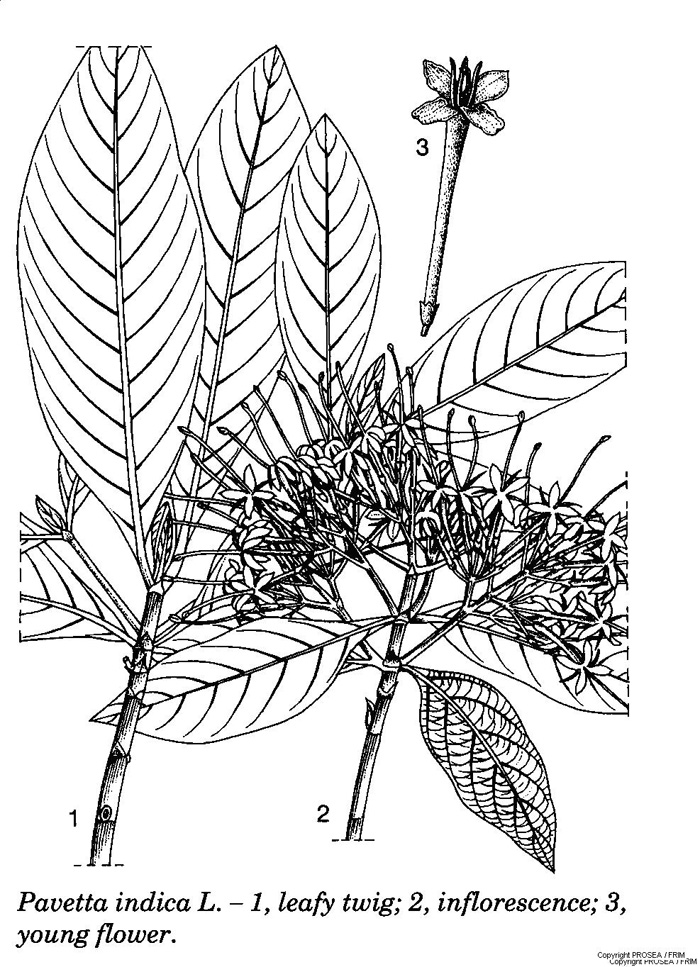Pavetta indica
Family
Rubiaceae
Synonyms
Ixora indica (L.) Kuntze, Pavetta tomentosa Roxb. ex Smith.
Vernacular Names
| Malaysia | Jarum-jarum, nyarum-nyarum, gading-gading. |
| English | White pavetta, bride’s bush. |
| Indonesia | Soka (Sundanese). |
| Philippines | Gusokan (Cebu Bisaya), pangapatolen (Iloko), kotbu(Igorot). |
| Laos | Kho som kang, kho som kao. |
| Thailand | Khem paa (central, northern). |
| Vietnam | Thanh t[as]o r[uwf]ng,d[oj]t s[af]nh, c[awr]ng g[af]. |
| French | Bois de pintade. |
Geographical Distributions
P. indica is widely distributed from the Andaman Islands, India and the north-western Himalayas to southern China and southwards throughout Malesia to northern Australia.
Description
It is a shrub or small tree, 3-5 m tall, with opposite branches. The young twigs are either hairless, covered with down, fine or pubescent hairs.
The leaves are simple, arranged opposite, in various shapes. The leaves are either egg-shaped or oblong, 6-13 cm x 2-5 cm supported by 1-2 cm long stalk, with acute or wedge-shaped base while the apex is obtuse to acute. The leaf surface can either be smooth or hairy underneath. The stipules are located between the stalk, connate at the base and distinctly cuspidate.
Inflorescence is a terminal, compact, erect corymb or corymbose panicle, up to 6 cm long. Their peduncle is persistent, short with large bracts, membranaceous and cupule-shaped. The fragrant flowers are bisexual, 4-merous, and white in colour. Pollen is shed before the stigma is ready to receive it. Its pedicel is short with bell-shaped sepal. Its teeth-tiny petals are rather thick cylindrical tube, 8-12 mm long. The lobes are obtuse, up to 4 mm long, contorted as a bud while the stamens are inserted at its petal. The stamens have short filaments and the arrowhead-shaped and conspicuously twisted anthers attached at the back. The anther’s disk is annular. Its ovary is inferior, consists of 2-locular with 1 ovule per cell, with slender, long-exserted style. The stigma has 2 short lobes.
The fruit is a spherical drupe, 5-6 mm in diametre, with 1-2 little nuts that turned black when ripe. The thin-walled, plano-convex 1-seeded little nut has a wide and circular excavation.
The seedling is epigeal germination and its cotyledons are green and leafy.
Ecology / Cultivation
P. indica is common in primary and secondary forests, where it often forms as a single stem. It also occurs in open localities, where branched types are more common, from sea-level up to 1500 m altitude.
Line Drawing / Photograph
References
-
Plant Resources of South-East Asia No 12(2): Medicinal and poisonous plants 2.



